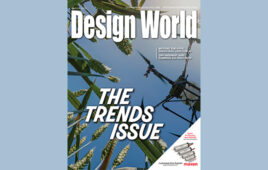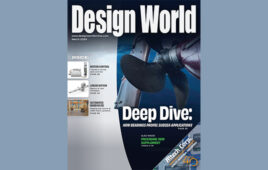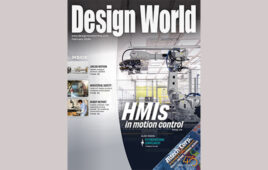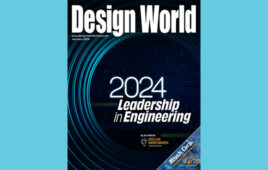In this issue:
36 BEARINGS
Technical update on ROTARY BEARINGS
48 CABLE MANAGEMENT
SUMMARY OF TODAY’S CABLE-MANAGEMENT OPTIONS
110 GEARMOTOTRS
An overview of GEARMOTORS
MOTION SYSTEMS; EVOLUTIONARY CHANGE…and then some
EACH year, the Design World motion editors prepare this special Motion Systems Handbook aiming to give our readers an overview of the basics of motion control systems.
While it may be a truism that the fundamentals don’t change all that much from year to year, there is certainly evolutionary change taking place. Both tried and true technologies of yore, such as belts and pulleys, chains, and screws, as well as more sophisticated components like controllers and drives are changing in line with the evolving industrial landscape, a chief driver of which is the Internet of Things (IoT) and its grittier cousin the Industrial Internet of Things (IIoT).
In fact, if anything can qualify as revolutionary, it may just be this proliferation of data in the increasingly interconnected world of devices. Most recent predictions for the motion industry focus overwhelmingly not on components themselves but rather on data. The vast amounts of data available promise an abundance of benefits to industrial machines and systems such as increased productivity, less machine downtime, and better efficiency.
There are a lot of related concepts here, including the so-called “smart factory” or “smart manufacturing”, yesterday’s buzzwords that are becoming today’s reality. All of them rely on collecting and analyzing data and putting itto productive use. Collecting this data via sensors, making it available to control systems at both the machine level as well as the enterprise level is what is bringing about the next generation of intelligent manufacturing.
Changes to motion system components reflect this. Some common examples include drives with auto-tuning capabilities for on-the-fly adjustments based on real-time conditions, and motors incorporating sensors collecting data on vibration which is then used to adjust performance or alert operators of any issues.
 As the motion industry continues to change, our hope is that this handbook will be informative and useful to you in your work. We always appreciate feedback from our readers and welcome more. Let us know how we’re doing as we look for ways to improve going forward. Tell us what you think. Is there something we’ve missed? Do you want more detail or less? Is there some technology or component we’ve overlooked?
As the motion industry continues to change, our hope is that this handbook will be informative and useful to you in your work. We always appreciate feedback from our readers and welcome more. Let us know how we’re doing as we look for ways to improve going forward. Tell us what you think. Is there something we’ve missed? Do you want more detail or less? Is there some technology or component we’ve overlooked?
You’re welcome to send any feedback directly to any of our motion editors. You can reach me at [email protected] or senior editor Lisa Eitel at [email protected]. You can also follow us on twitter at @DW_Motion, @DW_Lisa_Eitel, as well as our linear motion editor Danielle Collins at @DW_dcollins. Together we deliver the latest news and developments in motion control directly to you. And be sure to check out our specialized motion-themed websites at www. motioncontroltips.com, www.linearmotiontips.com as well as www.bearingtips.com and www.couplingtips. com for all the latest news, technical stories and industry trends.
Filed Under: DIGITAL ISSUES • DESIGN WORLD





Tell Us What You Think!